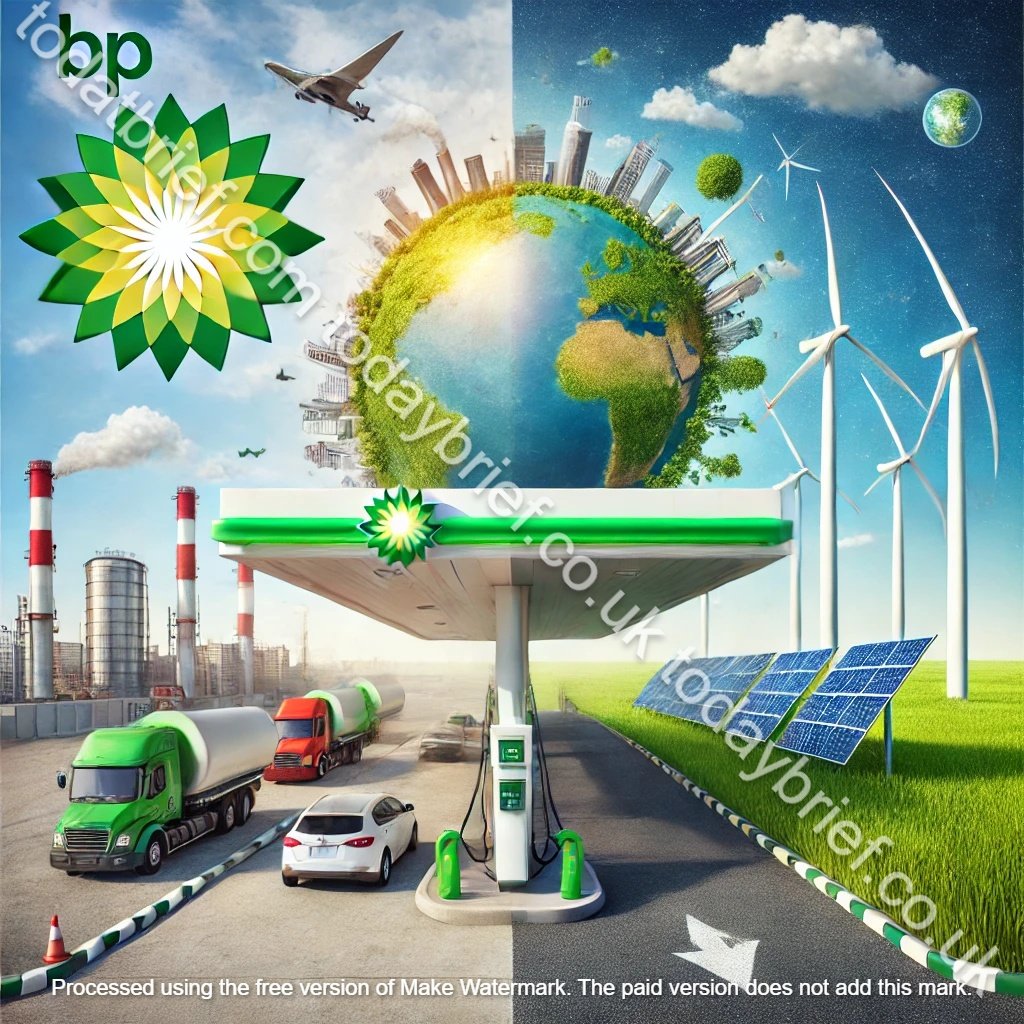(bp groeit, benzine, climate goals, brandstof,) BP, one of the world’s largest energy companies, is facing a crossroads as it navigates growth amidst global climate goals, fuel demands, and the shift toward renewable energy. With its long-standing presence in the oil and gas industry, BP is balancing its responsibilities to meet current fuel needs while committing to future sustainability.
2. The Growth of BP: A Historical Overview
(bp groeit, benzine, climate goals, brandstof,) BP (formerly British Petroleum) has been a dominant player in the oil and gas industry for more than a century. With operations spanning over multiple continents, BP has significantly influenced the global energy market. Its growth is deeply intertwined with the world’s reliance on fossil fuels.
3. BP and its Current Position in the Market
(bp groeit, benzine, climate goals, brandstof,) Despite the push for greener alternatives, BP continues to be a key player in supplying fuel like petrol and diesel globally. Its expansive network of refineries and fuel stations remains essential in catering to the ever-growing demand for gasoline and other petroleum-based products.
4. The Role of Benzine (Petrol) in BP’s Portfolio
(bp groeit, benzine, climate goals, brandstof,) Benzine, or petrol, is still one of BP’s most profitable products. As millions of cars rely on gasoline to power their engines, BP’s fuel production has to keep up with demand while acknowledging that this sector needs to evolve with environmental policies.
5. Balancing Fuel Demands with Climate Goals
(bp groeit, benzine, climate goals, brandstof,) As global governments increasingly set ambitious climate goals, BP is under pressure to reduce its carbon emissions while meeting fuel demands. This balancing act is shaping BP’s growth strategy, focusing on maintaining profitability in traditional markets while transitioning towards cleaner energy solutions.
6. BP’s Commitment to Climate Goals: Net Zero by 2050
(bp groeit, benzine, climate goals, brandstof,) In recent years, BP has publicly committed to becoming a net-zero company by 2050. This ambitious goal involves not just reducing its own emissions but also addressing the emissions from the products it sells, which presents a significant challenge given its large-scale fuel production.
7. The Importance of Renewable Energy for BP’s Future
BP’s growth strategy now heavily involves investing in renewable energy sources. The company is increasingly a(bp groeit, benzine, climate goals, brandstof,) llocating resources to wind, solar, and hydrogen energy, diversifying its portfolio to align with the global transition to low-carbon energy solutions.
8. Electrification: BP’s Response to the Electric Vehicle Boom
(bp groeit, benzine, climate goals, brandstof,) With the rise of electric vehicles (EVs), BP recognizes the shift away from petrol and diesel-powered cars. BP is investing in electric vehicle charging infrastructure, aiming to position itself as a leader in the future of transport energy.
9. Brandstof (Fuel) Evolution: Adapting to a New Era
(bp groeit, benzine, climate goals, brandstof,) BP’s business model is centered around brandstof, or fuel. However, the definition of fuel is evolving as the company expands into new types of energy. Traditional petrol is being complemented by biofuels, hydrogen, and other alternatives as BP adapts to the changes in the fuel industry.
10. Biofuels: BP’s Bridge Between Fossil Fuels and Renewables
(bp groeit, benzine, climate goals, brandstof,) Biofuels represent a transitional energy source that BP is investing in to reduce its carbon footprint. Made from organic materials, biofuels offer a cleaner alternative to traditional gasoline, although challenges remain in scaling production to meet global fuel demand.
11. BP and Hydrogen Energy: A Future Fuel Solution?
(bp groeit, benzine, climate goals, brandstof,) Hydrogen is seen by many as the fuel of the future, offering a zero-emissions alternative to gasoline and diesel. BP is increasingly exploring hydrogen production as a potential solution for heavy transport and industrial energy, which are harder to electrify.
12. The Role of Natural Gas in BP’s Transition
(bp groeit, benzine, climate goals, brandstof,) While moving away from oil is a priority, BP continues to see natural gas as a crucial element in its transition strategy. Natural gas, although a fossil fuel, is considered less carbon-intensive than coal and oil, offering a cleaner interim solution while renewable technologies mature.
13. BP’s Investments in Carbon Capture and Storage (CCS)
(bp groeit, benzine, climate goals, brandstof,) One of BP’s significant investments in meeting climate goals is in carbon capture and storage (CCS) technology. CCS allows for the capture of carbon emissions from industrial processes, which can then be stored underground, preventing them from contributing to global warming.
14. Collaborating with Governments on Energy Policies
(bp groeit, benzine, climate goals, brandstof,) BP’s growth and adaptation to climate goals also depend on collaboration with governments and policymakers. The company actively engages with governments to shape energy policies that balance economic growth, energy security, and environmental sustainability.
15. Challenges of Reducing Emissions in BP’s Supply Chain
(bp groeit, benzine, climate goals, brandstof,) While BP is committed to reducing its emissions, addressing the emissions from its supply chain—known as Scope 3 emissions—remains one of the biggest challenges. This involves reducing the carbon impact of not only its operations but also the fuel used by its customers.
16. Oil Prices and BP’s Growth Strategy
(bp groeit, benzine, climate goals, brandstof,) The fluctuating price of oil continues to affect BP’s growth strategy. While high oil prices can boost profits in the short term, they often conflict with the long-term goal of reducing fossil fuel reliance. BP must navigate this dynamic carefully to sustain growth while transitioning to cleaner energy.
17. BP’s Global Reach: Expanding into New Markets
(bp groeit, benzine, climate goals, brandstof,) BP continues to expand its global footprint, particularly in emerging markets where the demand for fuel remains strong. Countries in Asia and Africa are key to BP’s growth as these regions experience rapid industrialization and increased vehicle ownership.
18. Sustainability in Fuel Production: BP’s Green Refinery Initiatives
BP is exploring ways to make its fuel production more sustainable. The company is investing in green refinery technology to reduce the environmental impact of producing gasoline and other petroleum products. These initiatives help BP align its fuel operations with its climate goals.
19. The Role of Innovation in BP’s Growth
Technological innovation is at the heart of BP’s growth and transition strategy. From advanced drilling techniques to renewable energy projects and digital transformation, BP is leveraging innovation to stay competitive in a rapidly evolving energy landscape.
20. Engaging Consumers in BP’s Climate Mission
BP’s growth is not just about transforming its operations; it also involves engaging consumers. The company is increasingly educating customers about energy efficiency and the importance of reducing their carbon footprint through initiatives such as promoting cleaner fuel options and renewable energy.
21. BP’s Commitment to Sustainable Transportation Solutions
Transportation is one of the largest contributors to global emissions, and BP is working on solutions to decarbonize the sector. Through investments in electric vehicle charging stations, hydrogen refueling infrastructure, and sustainable aviation fuels, BP is contributing to greener transportation.
22. Public Perception and BP’s Brand Evolution
BP has faced public criticism over its role in contributing to climate change. As it shifts towards renewable energy and sustainability, BP is rebranding itself as an energy company rather than just an oil and gas provider, hoping to reshape public perception.
23. The Future of BP: A Global Energy Leader Beyond Oil
Looking ahead, BP’s growth strategy aims to position the company as a global energy leader that transcends its oil and gas origins. By diversifying into renewable energy, sustainable fuel, and low-carbon technologies, BP is preparing for a future where oil and gasoline play a lesser role.
24. The Economic Impact of BP’s Transition
BP’s transition from a fossil fuel giant to a diversified energy company has economic implications, both for the company and the regions it operates in. The shift will affect jobs, investment flows, and market dynamics, as BP navigates the economic realities of its new growth strategy.
25. Conclusion: BP’s Role in a Sustainable Future
BP’s growth amidst the demand for fuel and the urgency of climate goals is a balancing act that reflects the broader energy transition taking place globally. By investing in renewable energy, advancing sustainable fuel production, and committing to net-zero emissions, BP is aiming to redefine its role in a world where climate action and energy security must coexist.
BP’s ability to adapt to the changing energy landscape while continuing to grow will determine its success in the decades to come, as it strives to meet both the world’s fuel needs and its climate commitments.







